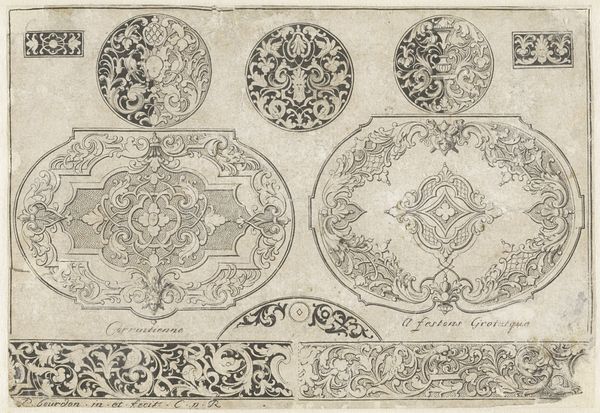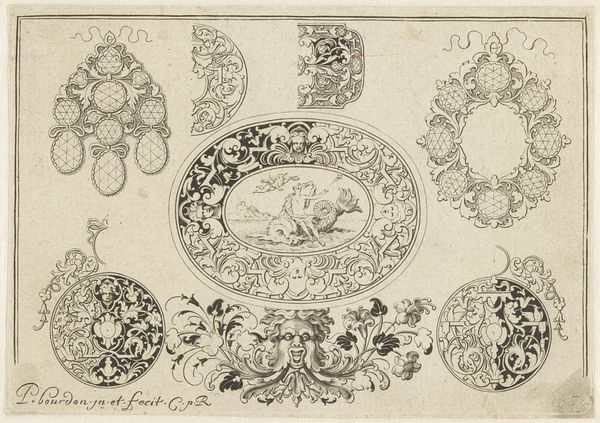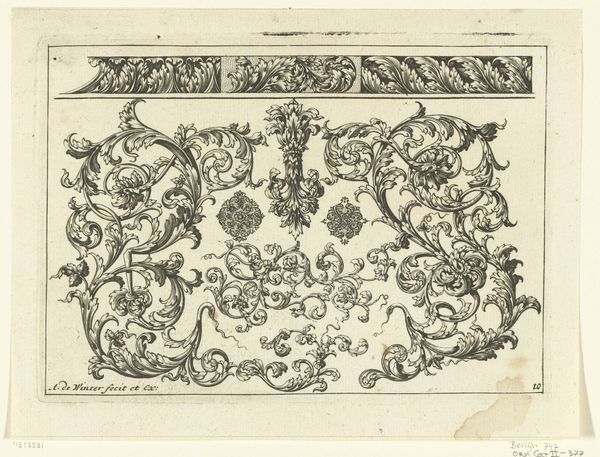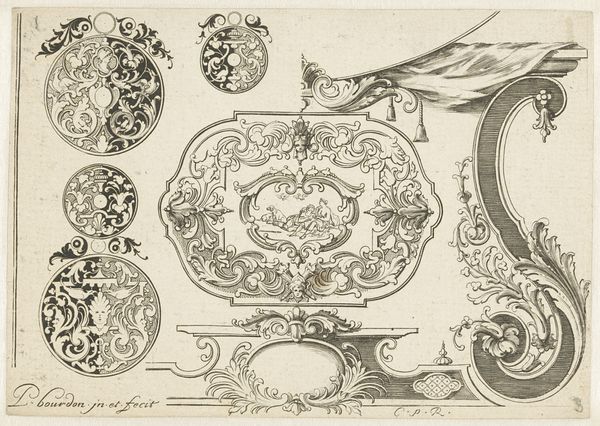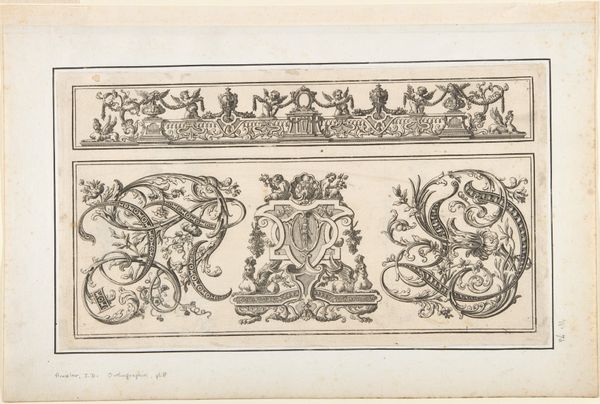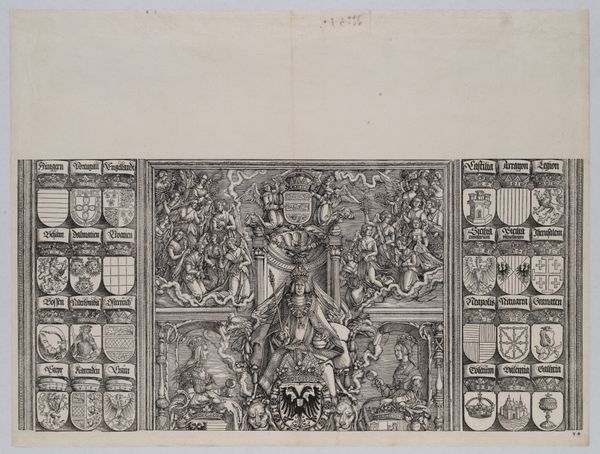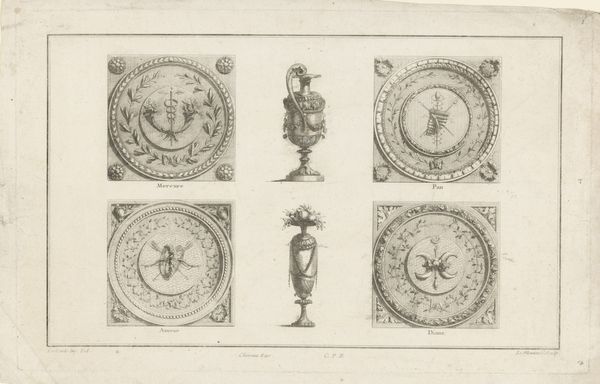
drawing, print, engraving
#
drawing
#
baroque
#
pen drawing
# print
#
geometric
#
line
#
engraving
Dimensions: height 122 mm, width 169 mm
Copyright: Rijks Museum: Open Domain
Curator: Here we have "Verscheidene ontwerpen met centraal Hercules," or "Various Designs with Hercules in the Center," an engraving likely used as inspiration for decorative arts, created after 1703 by an anonymous artist. It resides here at the Rijksmuseum. What's your initial take? Editor: The meticulous detail strikes me immediately. Each little flourish, each curve in the ornamental designs feels intentional. I'm sensing the power and hierarchy inherent in classicism through the figure of Hercules set against such ornamentation, something that resonates within this period’s elite patronage and power. Curator: Absolutely. The visual language screams "Baroque"—the symmetry, the exuberant ornamentation. Designs like this acted as a catalog of motifs, shaping artistic taste of the time. This print exemplifies the pervasive influence that mythology had within European decorative arts. Hercules, the demigod hero, signified strength, virtue, and often, divinely sanctioned rule. Editor: Seeing him centrally placed, presiding over the balance of justice, reinforces the idea that the state's legitimacy rested upon such virtue. However, what does it mask? Think about the era this was created. Colonization, the subjugation of various people in the name of the state, was well underway. This artwork functions, visually, to provide justification for this state of power. It's important to dissect this further when thinking about the social contexts present. Curator: A fair point. The image doesn't shy away from making ideological statements, using artistic representations of social standing, and speaking for certain societal practices, to subtly encourage or discourage societal behaviors and actions. The inclusion of Justice within the center cartouche, coupled with the strength of Hercules, subtly enforces prevailing attitudes of political thought. Editor: I think its easy to become immersed in this image from an aesthetic sense alone, however, by viewing the piece using intersectional frameworks, such as how race and gender are operating at the time this work was created, a further, contemporary significance may be revealed. Curator: Indeed, understanding the environment of production allows us a far deeper understanding of the choices the artist made—or was constrained by. Editor: And how institutions, like this museum, influence this discourse! A dialogue that's imperative, lest we perpetuate inequalities and reinforce blindspots about works like this. Curator: Well, it certainly gives me more to consider about its enduring appeal—beyond the aesthetic and towards the role it plays in reinforcing narratives of power. Editor: It reminds us that the responsibility lies with us to actively consider the complexities, contradictions, and the ethical problems presented within artistic expressions like these.
Comments
No comments
Be the first to comment and join the conversation on the ultimate creative platform.
